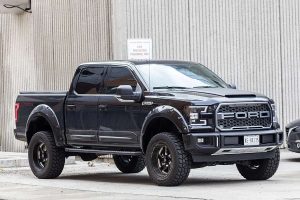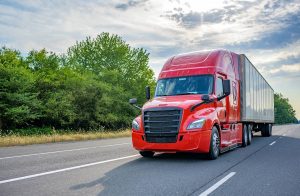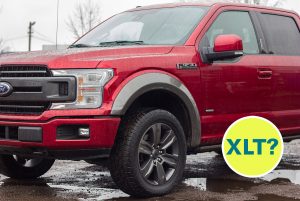Before you purchase a car, it’s generally a good idea to get a feel for how long, wide, and tall it is. Pickup trucks are incredibly reliable, but their sizes differ drastically between models. So, if you’re looking for a pickup truck, how much garage space can you expect it to take up?
Based on a review of 43 past and modern base models, the average dimensions of a pickup truck are 212.4 inches long, 76.0 inches wide, and 73.3 inches tall (without roof accessories).
Below, I’ll provide a chart that describes the dimensions of pickup trucks and describe the various factors that affect a pickup’s dimensions.
Pickup Truck Dimensions
In order to get the average dimensions of pickup trucks, we have to know the dimensions of all pickup trucks on the market. That, however, is a pretty huge task that probably nobody is willing to put the effort into accomplishing.
I, however, will create a table describing the dimensions of some of the most well-known trucks known to man and offer an average below. So, buckle up because we’re going for a long, long, incredibly long ride.
| Model | Length | Width | Height |
| Chevrolet Avalanche | 221.3 in. | 79.1 in. | 76.6 in. |
| Chevrolet C/K | 194.5 in. | 77.1 in. | 70.1 in. |
| Chevrolet Colorado | 212.7 in. | 74.3 in. | 70.7 in. |
| Chevrolet K5 Blazer | 191.9 in. | 76.7 in. | 67 in. |
| Dodge Dakota | 218.5 in. | 71.7 in. | 68.6 in. |
| Dodge Ram | 232.9 in. | 82.1 in. | 77.6 in. |
| Dodge Ram SRT-10 | 203.1 in. | 79.9 in. | 74.4 in. |
| Dodge Ramcharger | 188.8 in. | 79.5 in. | 74.1 in. |
| Ford Courier | 181 in. | 63 in. | 60.8 in. |
| Ford F-150 | 231.7 in. | 79.9 in. | 77.2 in. |
| Ford F-250 | 266.2 in. | 80 in. | 81.3 in. |
| Ford F-350 | 250 in. | 80 in. | 81.3 in. |
| Ford F-450 | 266.2 in. | 96 in. | 82.1 in. |
| Ford F-650 | 231.7 in. | 79.9 in. | 77.2 in. |
| Ford Ranger | 210.8 in. | 73.3 in. | 71.5 in. |
| GMC Caballero | 249 in. | 78.5 in. | 73.7 in. |
| GMC Canyon | 212.4 in. | 74.3 in. | 70.7 in. |
| GMC Sierra | 231.7 in. | 78.4 in. | 147.4 in. |
| GMC Sonoma | 205.3 in. | 67.9 in. | 63.4 in. |
| GMC Syclone | 178.2 in. | 64.8 in. | 61.3 in. |
| Honda Ridgeline | 210.2 in. | 78.6 in. | 70.8 in. |
| Hyundai Santa Cruz | 195.7 in. | 75 in. | 66.7 in. |
| Isuzu D-Max | 207.3 in. | 73.2 in. | 70.3 in. |
| Jeep Comanche | 179.2 in. | 71.7 in. | 63.7 in. |
| Jeep Gladiator | 218 in. | 73.8 in. | 76.1 in. |
| Mazda B-Series | 187.5 in. | 69.4 in. | 64.9 in. |
| Mercedes-Benz X-Class | 210.2 in. | 75.6 in. | 71.6 in. |
| Mitsubishi Triton | 208.5 in. | 71.5 in. | 69.9 in. |
| Nissan Frontier | 210.2 in. | 74.7 in. | 72.9 in. |
| Nissan Navara | 201.6 in. | 72.8 in. | 69.5 in. |
| Nissan NP300 | 210.2 in. | 73 in. | 72 in. |
| Nissan Titan | 229.5 in. | 80.7 in. | 77.2 in. |
| Nissan Titan XD | 242.7 in. | 79.5 in. | 78 in. |
| Renault Duster Oroch | 195.4 in. | 71.7 in. | 64 in. |
| Rivian R1T | 217.1 in. | 81.8 in. | 73.1 in. |
| Toyota Hilux | 212.3 in. | 75.2 in. | 70.6 in. |
| Toyota Land Cruiser | 194.9 in. | 78 in. | 74 in. |
| Toyota Stout | 184.1 in. | 77.2 in. | 68.9 in. |
| Toyota T100 | 209.1 in. | 75.2 in. | 71.6 in. |
| Toyota Tacoma | 212.3 in. | 75.2 in. | 70.6 in. |
| Toyota Tacoma X-Runner | 208.1 in. | 74 in. | 65.6 in. |
| Toyota Tundra | 233.6 in. | 80.2 in. | 78 in. |
| Volkswagen Saveiro | 175.8 in. | 72.5 in. | 64.4 in. |
| Average | 212.4 in. | 76 in. | 73.3 in. |
Sources: Edmunds.com and CarandDriver.com
Pickup Truck Size Categories
When it comes to choosing the right size of a pickup truck, it’s important to understand the different sizes available on the market. The 3 main sizes of pickup trucks are compact, mid-size, and full-size. Each size has its own set of advantages and disadvantages, which should be carefully considered before making a decision.
Compact
Compact pickup trucks are the smallest of the three sizes. They are typically the most affordable and have better fuel efficiency than larger trucks. However, they also have less towing capacity and cargo space, making them less practical for those who need to transport large items or haul heavy loads.
Mid-size
Mid-size pickup trucks are a versatile choice for those who need a truck that strikes a balance between fuel efficiency and towing capacity. They are larger than compact trucks, offering more passenger space and cargo capacity, while still being more fuel-efficient than full-size trucks.
These trucks are a popular choice for both personal and work use, as they offer a comfortable ride for passengers and the capability to tow and haul moderate loads. With their improved performance and additional features, mid-size trucks are becoming a popular choice for those who want a truck that can handle a variety of tasks while still being practical for everyday use.
Full-size
Full-size pickup trucks are the largest of the three sizes. They have the highest towing and payload capacity, making them ideal for heavy-duty work or hauling large items. However, they are also the least fuel-efficient and the most expensive of the three sizes. They can be more difficult to maneuver and park in tight spaces, which can be a disadvantage for those who plan to use their truck for everyday driving.
What Affects Pickup Truck Dimensions?

As you can see from the table above, certain models can be much more compact than others. So, what affects these size differences? Read on to find out!
1. Purpose
When it comes to pickup trucks, size does matter, and the intended purpose of the truck plays a significant role in determining its dimensions. A truck designed for heavy-duty work may require a larger size to accommodate the weight it needs to haul, whereas a truck intended for personal use may prioritize maneuverability over size.
2. Payload capacity
The payload capacity of a pickup truck can significantly impact its size, as a larger truck may be necessary to accommodate a higher payload capacity. If you plan on hauling heavy equipment or materials, a larger truck with a higher payload capacity may be needed to handle the weight safely and efficiently.
Understanding the payload capacity requirements of your work or hobbies can help you choose the right size pickup truck to meet your needs and avoid overburdening your vehicle.
3. Passenger capacity
Manufacturers often have to balance the need for additional seating with the practical limitations of a truck’s dimensions. A pickup truck with a larger cabin for more passengers may need to sacrifice bed length or overall length to fit comfortably on the road.
4. Towing capacity
Towing heavy loads can be a challenging task, requiring a truck with a higher towing capacity to get the job done efficiently and safely. To accommodate the weight being towed, manufacturers may design pickup trucks with larger dimensions, including a longer wheelbase, a reinforced frame, and a more robust suspension system.
A pickup truck with higher towing capacity needs to be built to handle the weight being pulled, requiring larger dimensions and stronger components to support the load.
5. Engine power
The engine is the heart of a pickup truck, and its power can significantly impact the truck’s performance and size. Trucks with more powerful engines may require larger dimensions to accommodate the engine and related components, such as a larger radiator and cooling system, a bigger exhaust system, and a larger fuel tank.
A pickup truck with a more potent engine may need larger dimensions to ensure the engine can run at peak performance, providing the power and torque needed for tough tasks while maintaining efficiency and reliability.
6. Design preference
Manufacturers understand that consumer preferences play a crucial role in determining the success of their products. To appeal to customer needs and preferences, they may design pickup trucks with specific dimensions, such as a larger cabin for passenger comfort or a longer bed for carrying cargo.







